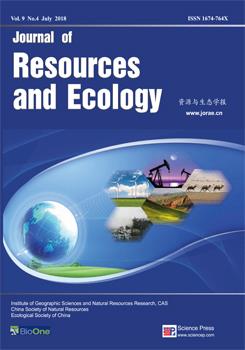Spatial differentiation in forest transition was measured in terms of space transition and function transition using the exploratory spatial data analysis method (ESDA) and data from 2004—2014 for Zunyi city, Guizhou province, China. The validity of factors affecting forest transition was analyzed by constructing radial basis function neural networks (RBFNN) based on the data processing system (DPS). Our results will provide references for scientific understanding of the potential mechanism underlying forest transition in mountainous areas. We found that Global Moran's / of space transition and function transition of forest land was 0.0336 and 0.2323, respectively. This suggests a significant positive correlation in spatial distribution of space transition and function transition of forest land, and significant spatial aggregation. The Global Moran's / of function transition was higher than that of space transition, and the spatial aggregation characteristics of function transition were more significant than for space transition. The Global Moran's / at each time period tended to increase, and the spatial aggregation degree of the function transition and space transition was further enhanced. Hot and cold spots of space transition of forest land stably evolved, suggesting a minor spatial difference in forest land among different administrative units at the county level. The number of hot spots at the county level in function transition increased. Hot spots were intensively distributed at the western edge and continuously distributed in the northeast. The space transition and function transition of forest land were both greatly influenced by urbanization rate and second and third industries. The development of urbanization and industrialization was the main factor driving forest transition, suggesting a positive role of economic growth on forest transition in mountainous areas. The development of urbanization and industrialization is an effective approach to forest transition in mountainous areas.
How to translate text using browser tools
1 July 2018
Spatial Differentiation Characteristics and Driving Forces of Forest Transition: A Case Study of Zunyi City, Guizhou
Dong Shunzhou,
Zhao Yuluan,
Li Xiubin
ACCESS THE FULL ARTICLE

Journal of Resources and Ecology
Vol. 9 • No. 4
July 2018
Vol. 9 • No. 4
July 2018
forest transition
influence factors
radial basis function neural networks
spatial differentiation





